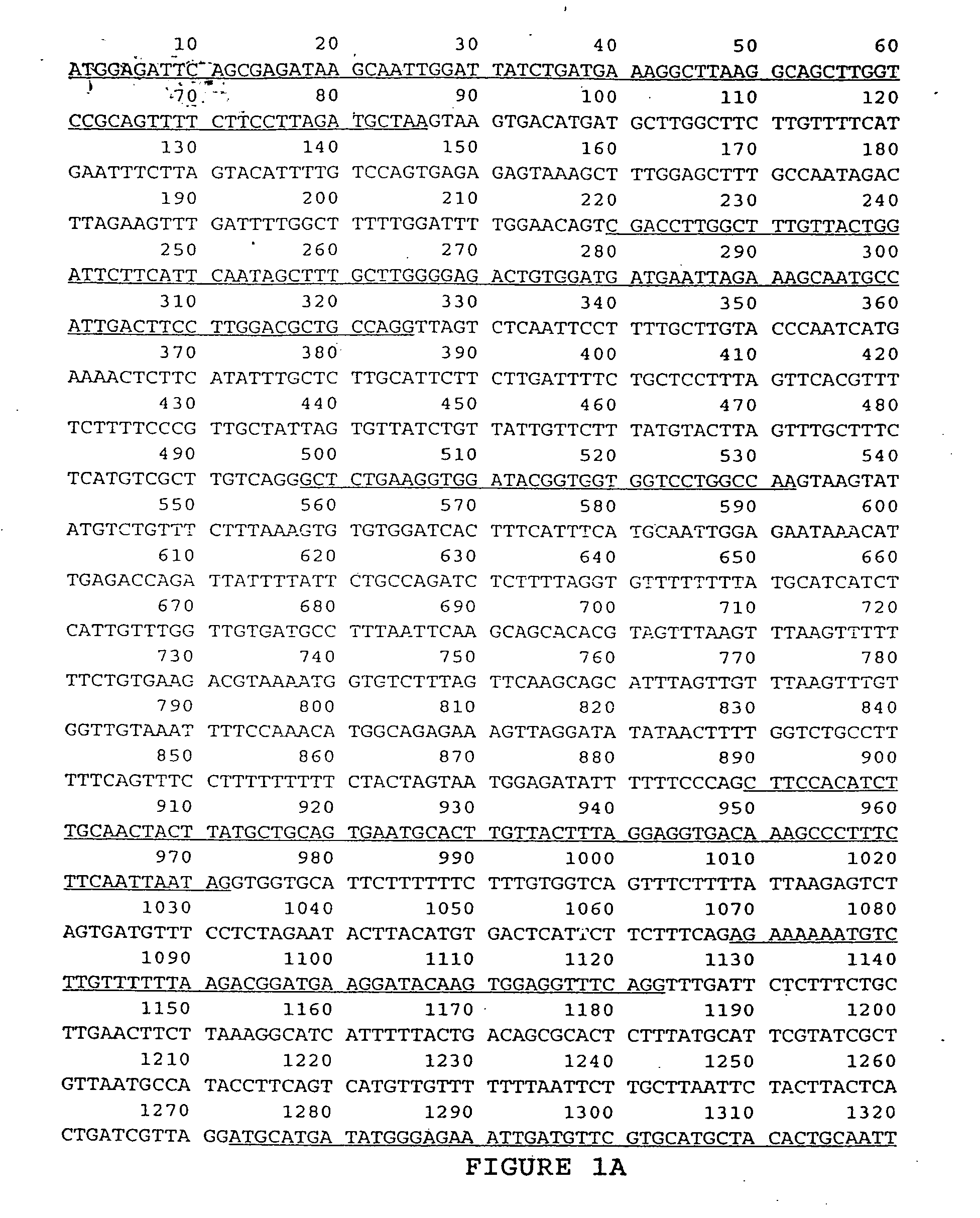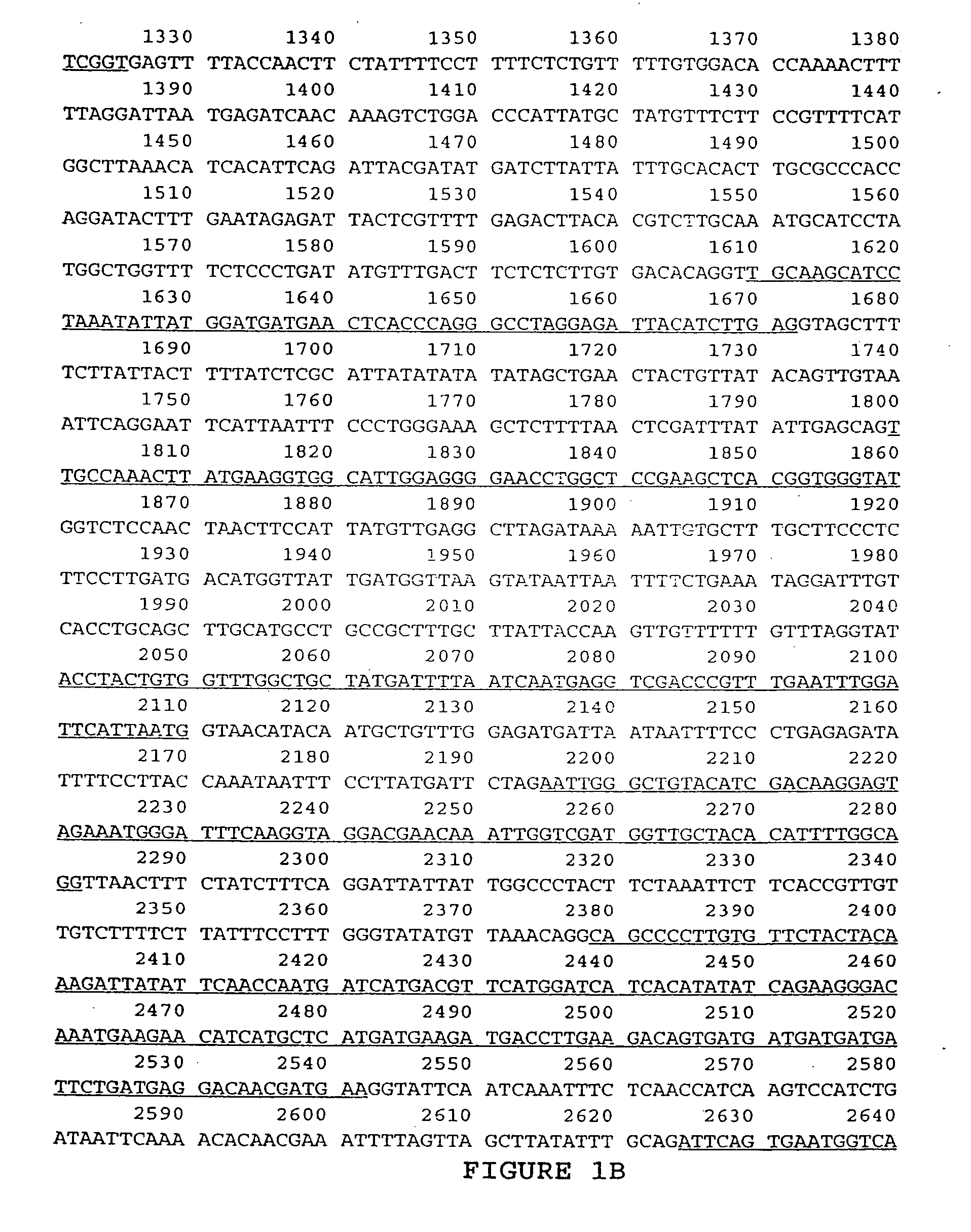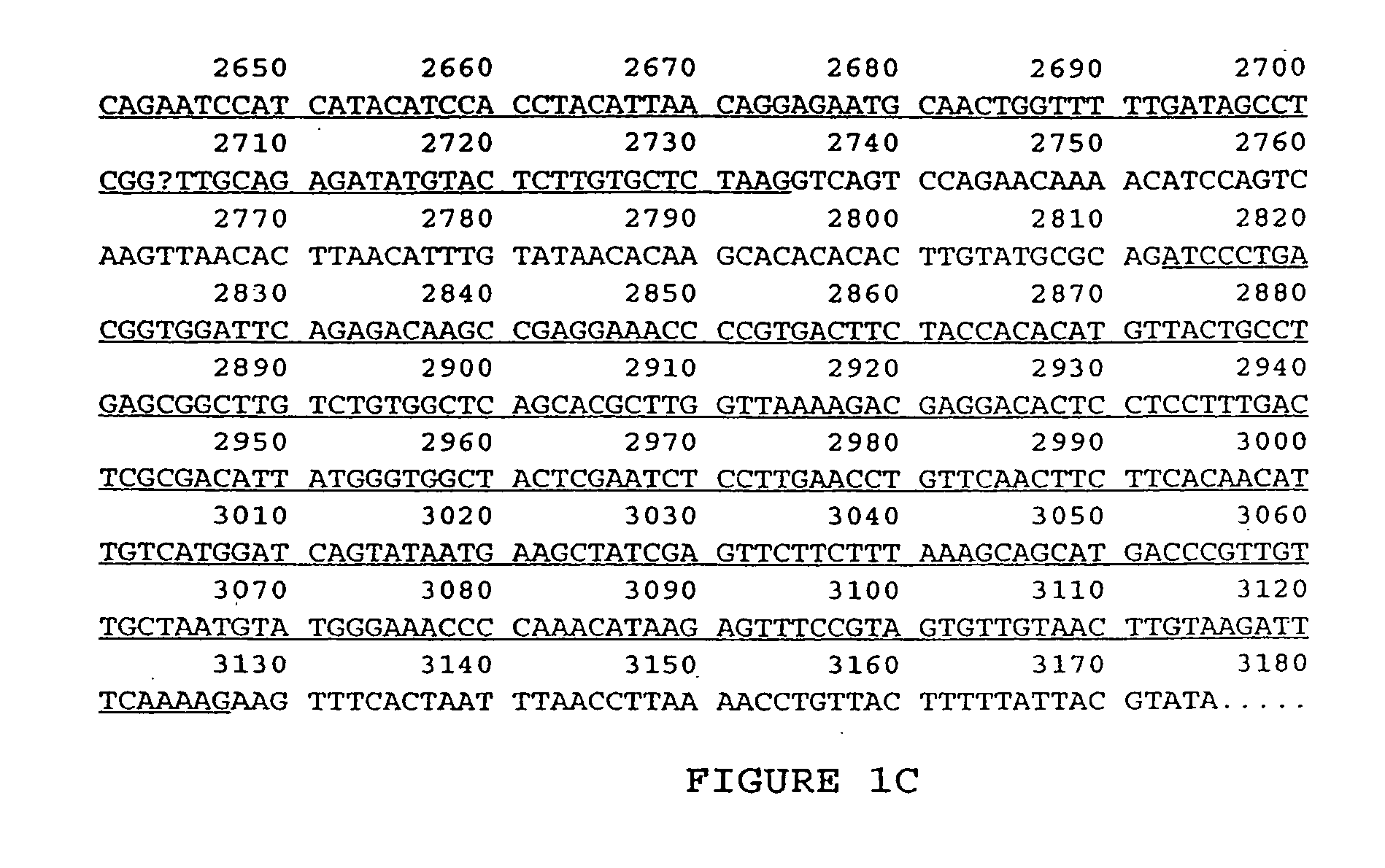Stress tolerance and delayed senescence in plants
a stress tolerance and plant technology, applied in the field of stress tolerance and delayed senescence in plants, can solve the problems of limited plant growth and crop productivity in agriculture, profound effects on little knowledge of the genetic mechanisms which control plant growth and development, so as to improve the stress tolerance of crop plants, enhance drought or stress tolerance of plants, and enhance drought or stress tolerance.
- Summary
- Abstract
- Description
- Claims
- Application Information
AI Technical Summary
Benefits of technology
Problems solved by technology
Method used
Image
Examples
embodiments
[0204] The constructs and methods of this invention have numerous applications of commercial value, especially in the prevention of desiccation of plant tissues under periods of water stress. Genetic manipulation of crop plants incorporating inhibitors of Ftase or inactivation of the gene encoding endogenous plant Ftase would allow such plants to withstand transitory environmental stress and can broaden the environments where these plants can be grown. Thus, improving tolerance of crop plants to cold, salt and drought stress, can improve the yield of the plants under such adverse conditions.
[0205] The technology described herein can also be used to alter harvesting time and harvest quality of plants. For example, overexpression of Ftase could lead to faster drying times of crops, such as corn and other grasses. Drying corn involves the use of large amounts of propane gas. Drying times of crops such as hay, which dry naturally in the fields, could be shortened, making it less likely...
example 1
is Conditions
[0214]Arabidopsis plants used in this study were grown under continuous light in soil- or agar-containing petri plates as described elsewhere (Haughn and Somerville 1986). Two distinct wild-types of Arabidopsis were used: Meyerowitz's Colombia (MCol) (Lelhe Seeds, Dripping Springs, Tex.) and Wassilewskija (Ws) (ABRC, Ohio State University). T-DNA mutagenized seeds were screened and mutants were isolated in the Wassilewskija background. These were obtained from the Ohio State Arabidopsis seed stock collection (ABRC stock numbers CS2606-2654). The T-DNA seed collection was comprised of 49 pools of 1200 fourth generation (T4) offspring derived from 100 mutagenized parents. A mutagenized parent was obtained by incubating wild-type (T1) seeds overnight in a saturating Agrobacterium culture containing a T-DNA plasmid carrying a gene conferring kanamycin resistance. The seeds were then washed in water and planted into pots. T2 generation seed were obtained from each plant and ...
example 2
nalysis
[0216] Mutant lines were backcrossed to wild type three times. T-DNA mutations were backcrossed to Ws and fast neutron mutants to MCol. Segregation of the era phenotype was followed by plating F2 seeds on both 0.3 μM ABA and imbibing four days at 4° C. Following imbibition, plates were transferred to room temperature in the light. Germination was measured as the presence or absence of expanded cotyledons in seedlings one week after imbibition. Double mutants were constructed by crossing lines homozygous for each mutation following segregation and identifying lines that carried one of the mutant phenotypes. The abi3 allele used in this study is abi3-6 (Nambara et al., 1994) and the abi1 allele is abi1-1 (Koornneef et al., 1982). The era1-2 allele was used as the era parent. Segregation analysis suggested era I partially suppressed the insensitivity of abi1 to ABA, so F2 plants were first screened for insensitivity to 3 mM ABA, and F3 seed from these plants were scored for sens...
PUM
| Property | Measurement | Unit |
|---|---|---|
| nucleic acid sequence | aaaaa | aaaaa |
| resistance | aaaaa | aaaaa |
Abstract
Description
Claims
Application Information
 Login to View More
Login to View More - R&D
- Intellectual Property
- Life Sciences
- Materials
- Tech Scout
- Unparalleled Data Quality
- Higher Quality Content
- 60% Fewer Hallucinations
Browse by: Latest US Patents, China's latest patents, Technical Efficacy Thesaurus, Application Domain, Technology Topic, Popular Technical Reports.
© 2025 PatSnap. All rights reserved.Legal|Privacy policy|Modern Slavery Act Transparency Statement|Sitemap|About US| Contact US: help@patsnap.com



